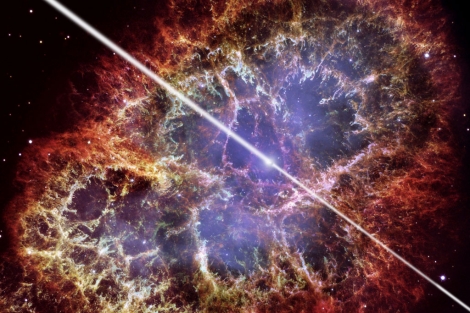
The Crab Nebula, the remains of an exploding star (supernova) that was observed by Chinese and Arab astronomers in 1054, is the source of emanation of energy that is much larger than the theoretical models indicate the Physics. The focus energy to some 6,300 light years from Sol, is in its center is a pulsar, called PSR0531 +121, which rotates on itself at 30 revolutions per second.
This pulsar, as astronomers have observed, it emits gamma radiation with an energy that exceeds 100,000 million electron volts (100 GeV), a million times more than the X-ray medical radiography and 100,000 million times the light. So far, the maximum energy that was detected did not exceed 25,000 GeV, four times less.
The finding, which was performed by observing radio Veritas, located at the Fred Lawrence Whipple Observatory, Tucson (USA), in operation since 2007, precisely to capture high cosmic radiation as it is. Still, astronomers had no idea that so much energy power in the universe: "If a year ago asking if theorists would see a gamma-ray pulsar with this energy, almost all would have said it was impossible because no theory can explain "said Martin Schroedter Smithsonian Center for Astrophysics (Harvard University).
Another author, Nepomuk Otte, a postdoc at the University of California, acknowledges that some colleagues thought I was crazy when he began to find emission of the Crab Nebula pulsar in this energy range, but he persisted in his idea. "Now, the new findings bring us another challenge, which is figuring out how to generate these gamma rays," Otte later.
The astronomers observed the high-energy gamma rays with mirrors to detect faint flashes, brief flashes of blue light produced by subatomic particles that are generated in the interaction of gamma rays of very high energy with the atmosphere.
Source: elmundo.es
No hay comentarios:
Publicar un comentario